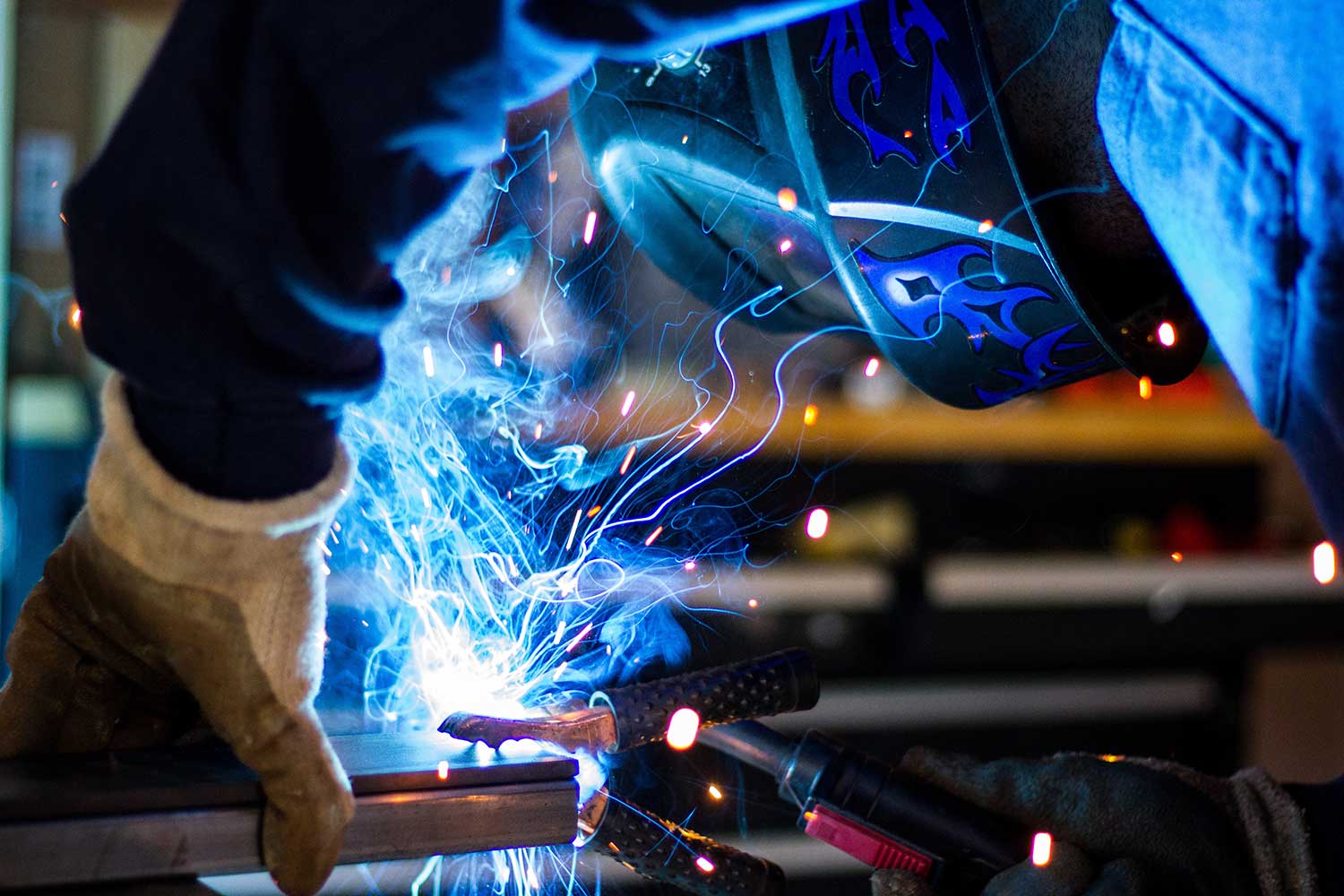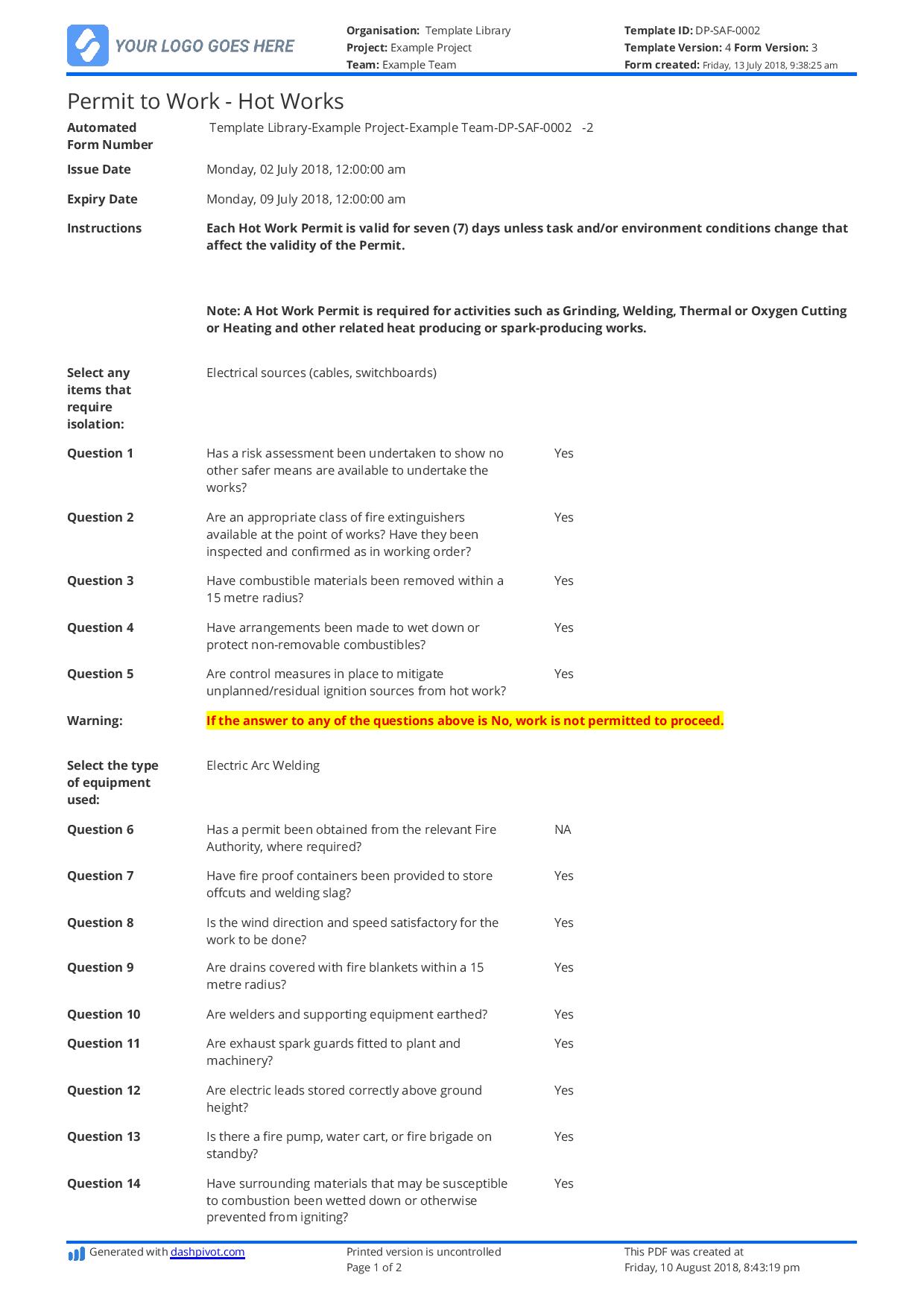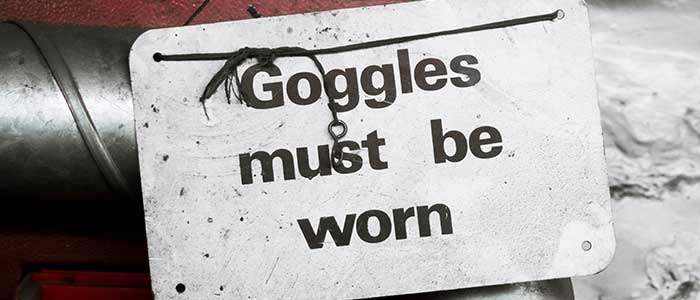Safety – Hot work permit format

Hot works procedure: Here's what's required
About hot works
Hot works are commonplace on many work sites around the world, and they serve an integral role in moving projects forward and making many construction and industrial processes possible.
Hot work is any work that may generate flames, heat or sparks and it includes any cutting (wet/dry), grinding, welding and use of open flames.
Fire and open flame, as well as intense heat sources can be a powerful tool for getting work done, but they also come with plenty of inherent danger and hazards:
- Fire
- Burns
- Stray sparks
- Explosion
- Electrocution
- Burns
- Arc-flash
- Oxygen-depletion
- Toxic fumes
Many of these hazards are a constant in hot works, making your hot works permitting and procedures critical to ensuring none of them eventuate and turn into regrettable incidents. A standardised Job Hazard Analysis for hot works can help keep your team safe and compliant.
The intensity of hot works being performed can full on a wide spectrum, from using a grinder to split some steel to performing shielded metal arc welding on live gas pipelines - where the consequences are rather dramatic.
While some of these hazards are obvious and catered to via personal protective equipment, others are more subtle but equally devastating. Hot works should not be taken for granted, as the consequences for a lack of conscious thought and safety effort can result in poor safety outcomes for companies and the individuals performing hot works.
Getting your hot works permit format right
One of the most important 'parts' of performing hot works is conducting a risk assessment and safety check via a hot works permit. Hot works permits are required for all hot works, and must be completed before any work involving welding, grinding, gas-cutting, flame heating or any other flame / spark producing equipment is commenced.
The only times your hot works don't require a permit involve:
- Tasks undertaken in recognised workshops where welding, grinding and burning are routine operations
- For use of portable gas-fired space-heating equipment that is hired for specific short-term use
Outside of this, permitting forms the structure of your approach to hot works safety.
The format for you hot works permit should be largely standardised and structured around a hot works permit framework which you can deploy to your projects and teams for anyone conducting hot works to complete and signoff on.
You can see an example of what your hot works permit should look like below. It contains a number of core sections which serve as record keeping, final safety checks and 'insurance' to protect against forgetting to do something important.
You hot works permit format should include:
Basic record keeping information - The issue and expiry data, instruction for permit applicants and a description or the type of hot works being performed
Hot works safety checks and measures - The next 'checklist' provides the list of checks and preventative measures necessary to begin hot works
At the end of the permit, there should be a section for signoff, confirming that all the 'steps' required to conduct hot works safely have been taken.
Expand the example below by clicking on the button in the middle of the permit, opening up both pages and enabling you to take a closer look at the contents and purpose of each question.

Use this hot works permit to streamline your hot work procedure.
Following the right hot works procedure
Your hot works permit forms the backbone of the executional preparation around hot works, but there are some additional steps and safety requirements which make performing hot works safer - which form a critical part of your overall safety procedure.
Display of permits and warning signs
Hot works don't just involve hazards for the person with the grinder or welding torch, they endanger the people around those hot works sources too. Properly signing and marking areas and entry points near performed hot works ensures that parties moving through and around site aren't exposed to hot works without the right safety gear, and that they don't disrupt the concentration or work of the person doing the job.
Fire Detection Systems
A necessary and often forgotten part of any hot works procedure is the isolation of fire detection systems (smoke or thermal). These systems were designed to detect and protect against heat, smoke, spark and fire so do not mesh very well with hot works. Not isolating fire detection systems can simply be an annoyance (when the alarm goes off), but can also lead to reactions from fire departments and other personnel, which disrupts work.
Personal Protective Equipment
Many of the preventative measures discussed so far revolve around the bigger picture safety items associated with performing any type of hot works.
In addition to these universal rules, the performer of hot works must have access to and wear personal protective equipment as required to complete the particular work (e.g. welding, grinding etc.).
There are a few common excuses for not wearing PPE for hot works, both of which are shallow and unacceptable for maintaining high safety standards at the company and individual level:
- The person didn't have access to the right equipment
- The works being performed were quick or short and didn't require PPE
These excuses shouldn't appear on your sites, and everyone should have access to and be wearing the equipment necessary at all times.
Focus on hot works safety
Hot works carry with them a number of hazards and risks which when not respected and prepared for properly can lead to problems. But if you follow the right hot works procedure and permitting format and are generally conscious of safety and taking care in preparing for and performing hot works, your hot works incidents should remain infrequent and highly manageable.
For more information on the laws and regulations surrounding hot works in your country or area, search for or call the appropriate authority to understand the code of conduct and what's required of you and your company.

Hot Works Permit template
Ensure the neccesary steps are taken before handling hot works. See the template →
